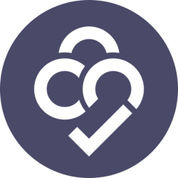Range is a Collaboration Software. Range offers Group Calendars, Discussion Boards, Cooperative Writing, Chat (Messaging), Brainstorming and many more functionalities.
Some top alternatives to Range includes Teamwork, CollaborateCloud, Zoho Cliq, ClickUp and Collabtools.
No, Range doesn't provide API.
No, Range doesn't provide mobile app.
Range is located in San Francisco, CA
Range offers Free Trial, Subscription pricing models
The starting price of Range is $9/User/Month















